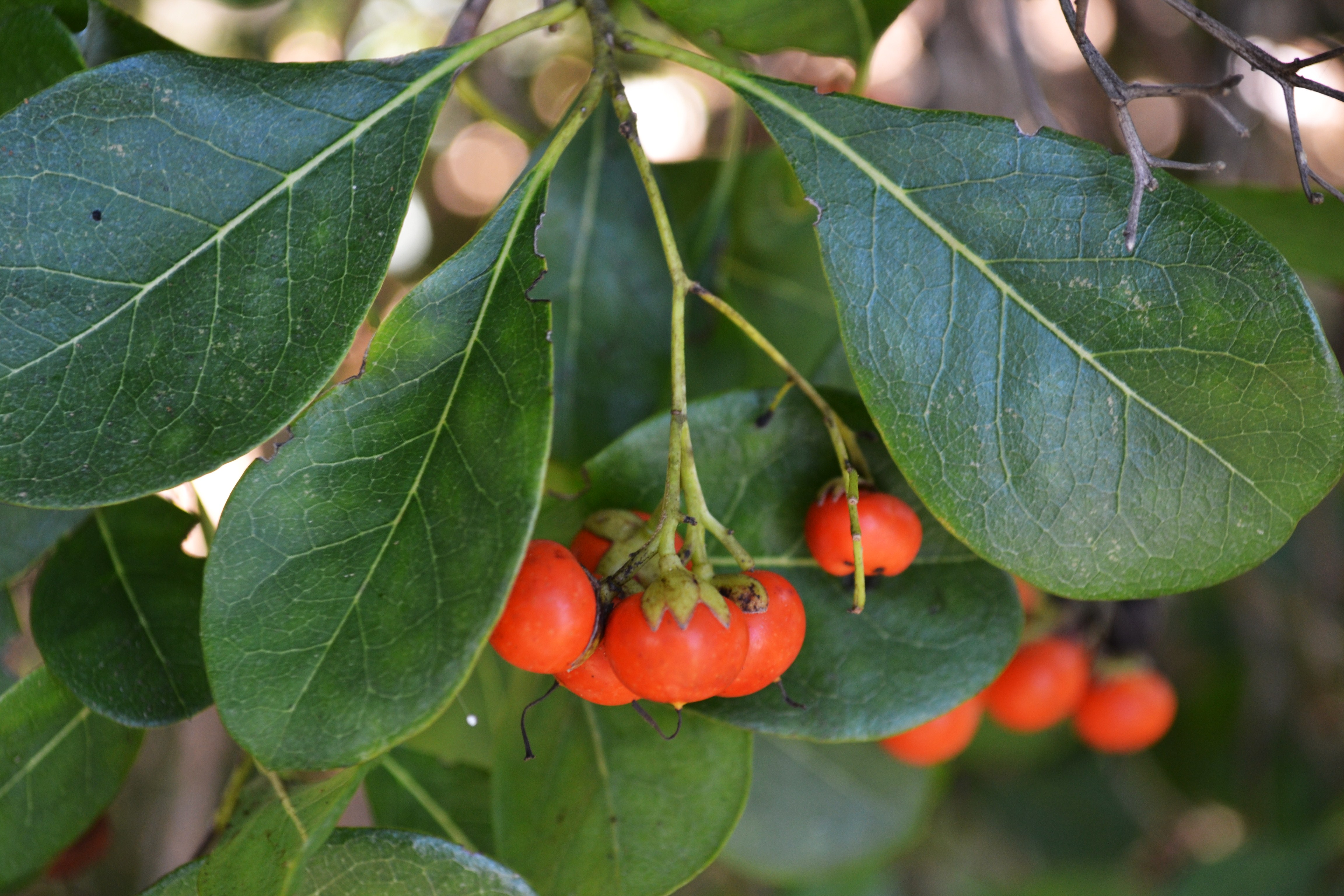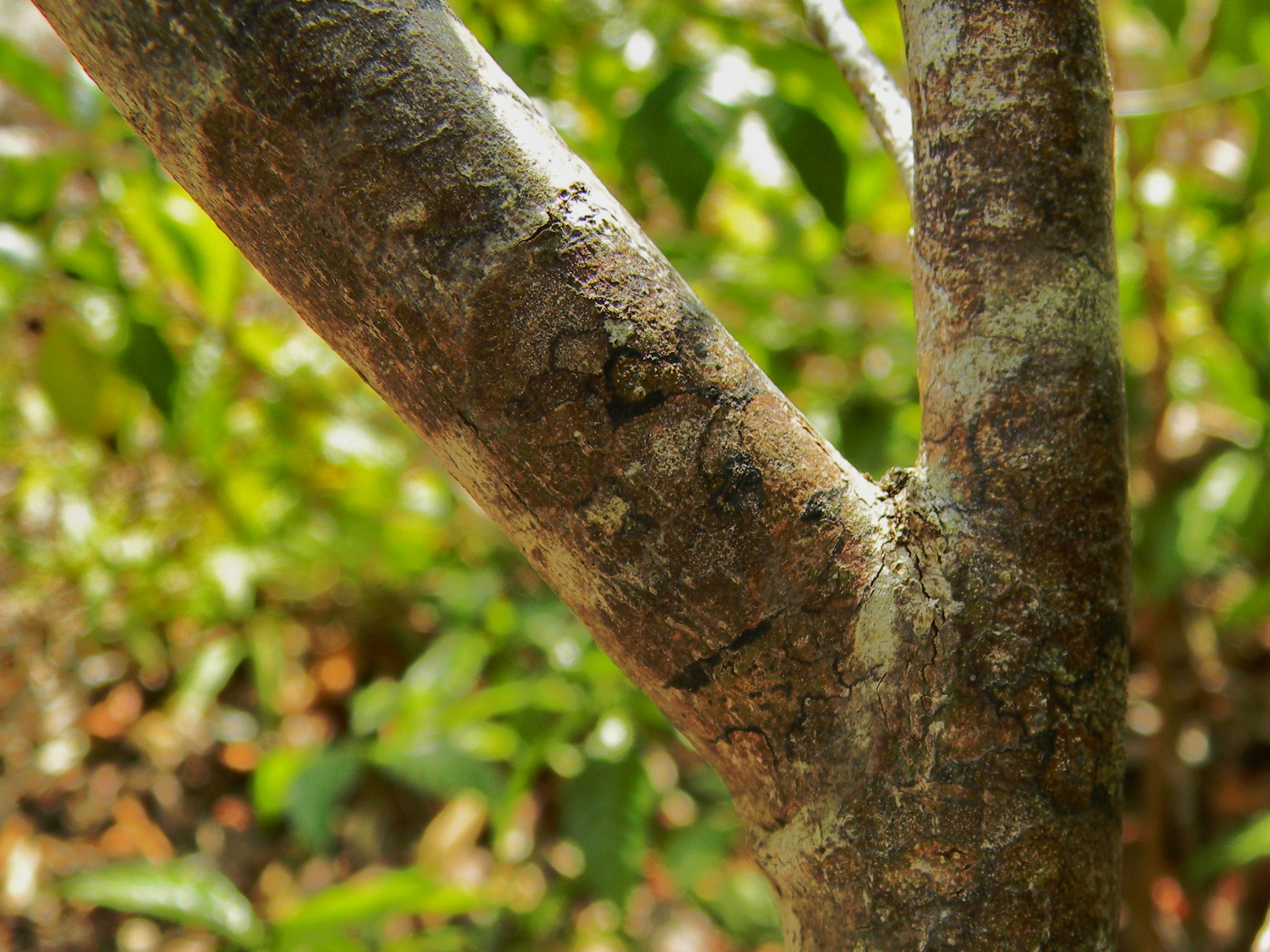Bahama Strongbark
Bourreria succulenta
Plant Family: Boraginaceae
Leaves: Alternate, simple, obovate, smooth, to 10 cm, the apices are rounded or may be notched, lighter green beneath. The tree may lose many leaves in the winter dry season (tardily deciduous) but they come back in a robust fashion with the spring and summer rains.
Bark: Red-brown, rough and fissured.
Flowers: Monoecious, white, with 5 rounded petals, bell-shaped, in terminal clusters, they are attractive to bees and butterflies; all year, peaking in the summer.
Fruits: An orange drupe, to 1 cm, held in flat clusters at the branch ends; they provide food for birds; late summer into winter.
Habitat: Keys hammocks.
Growth Form: Shrub to small tree, the branch ends tend to droop down.
Similar Species: Rough Strongbark (Bourreira radula) is a rare Keys species that has shorter leaves that are rough to the touch.
Comments: Bahamian and West Indian women have used the bark to make a tea that is reported to make their men more virile, explaining the common name. Bahama Strongbark is called Bourreria ovata in older references.


